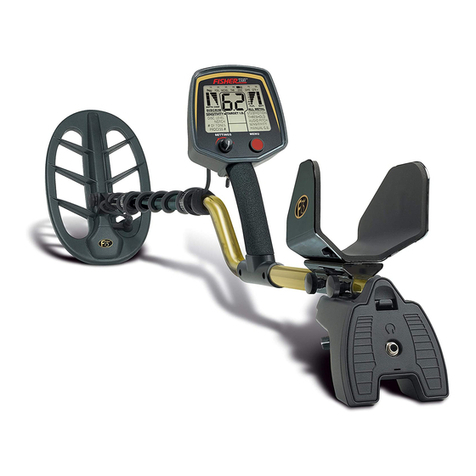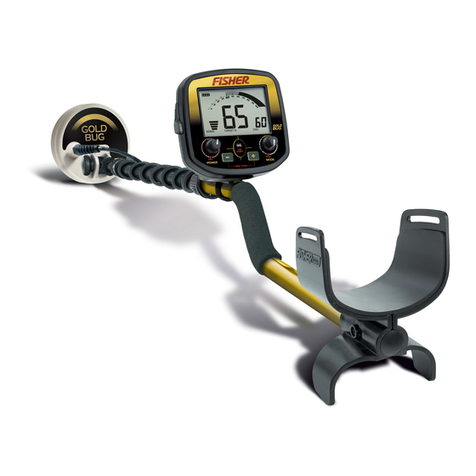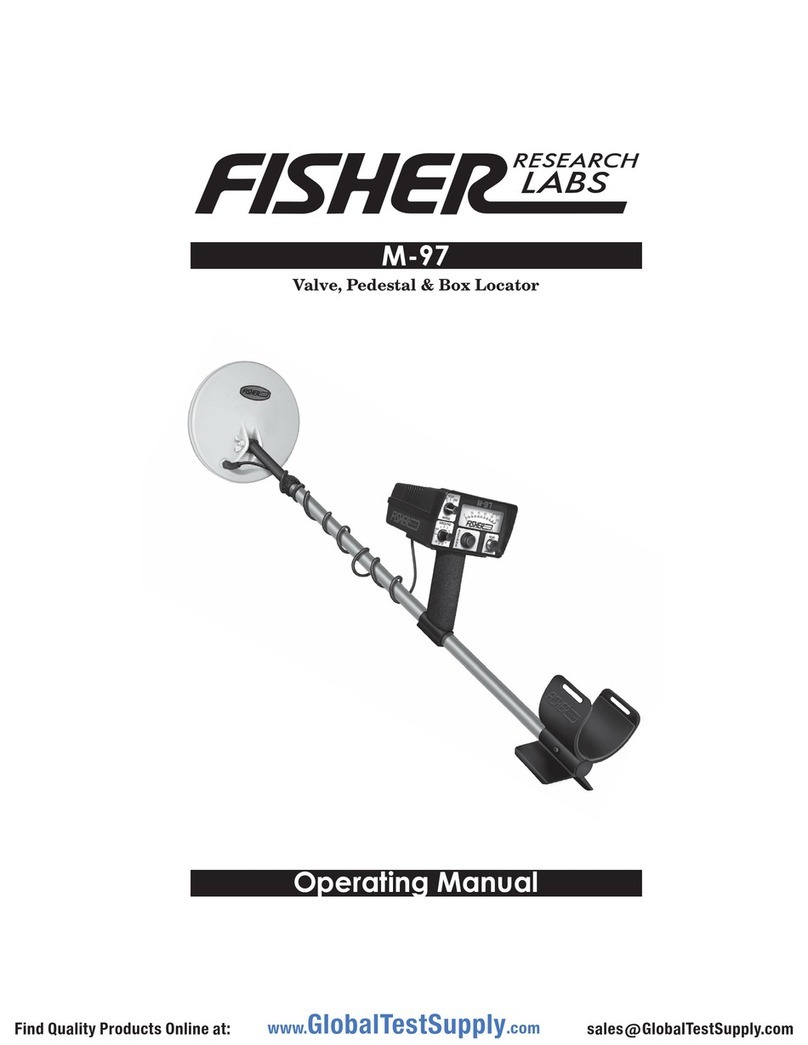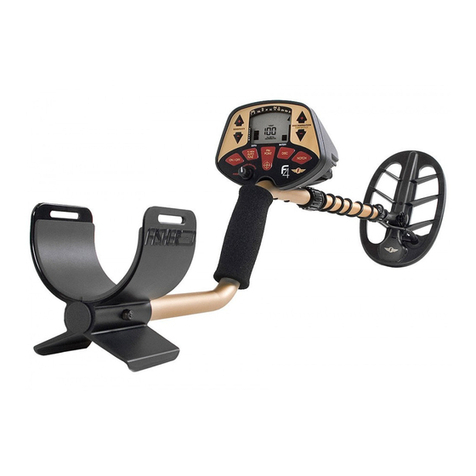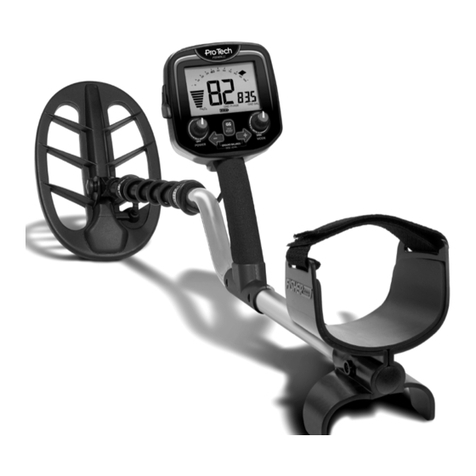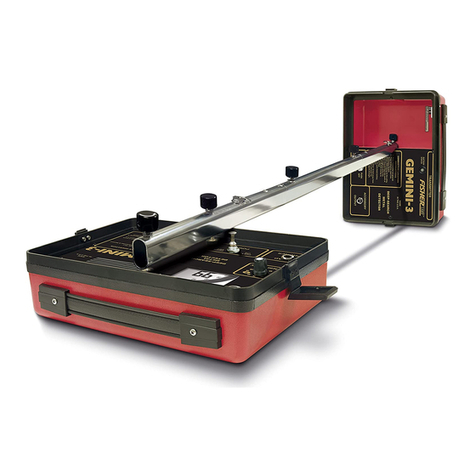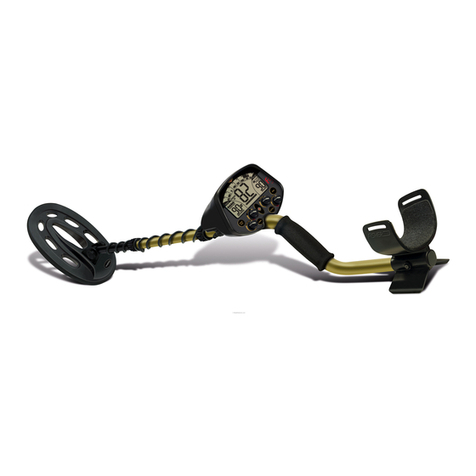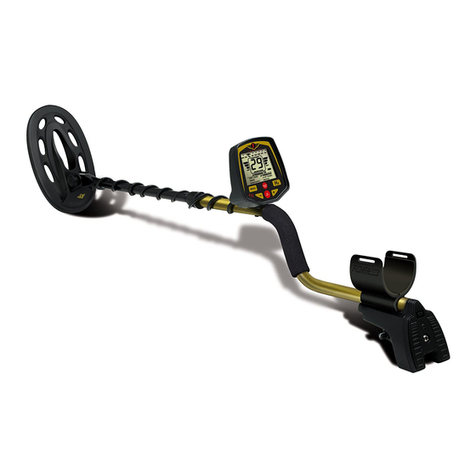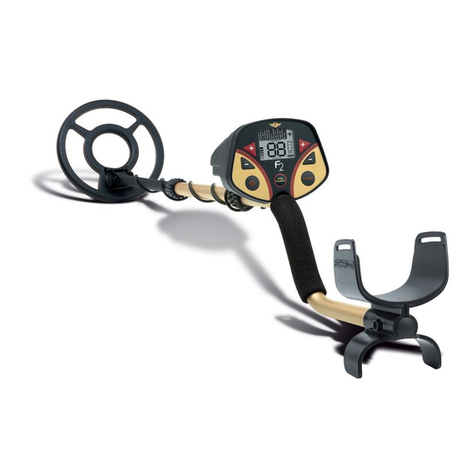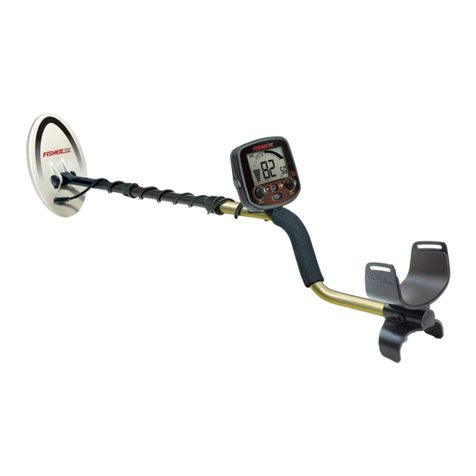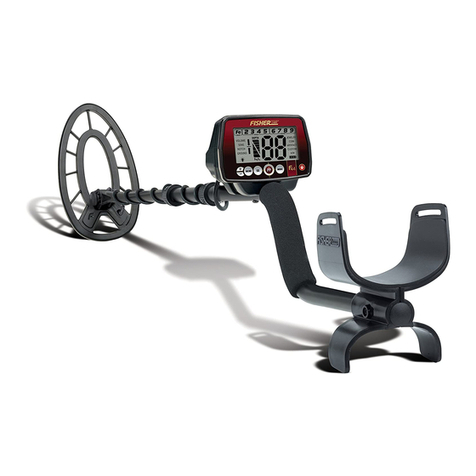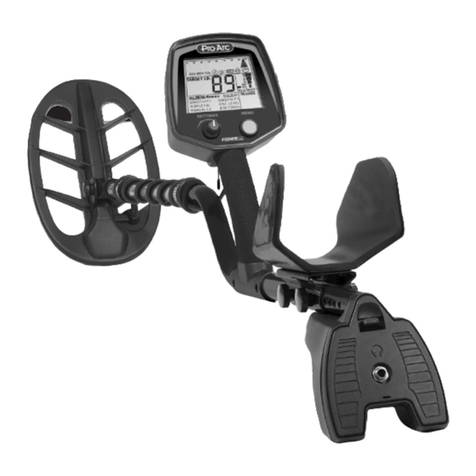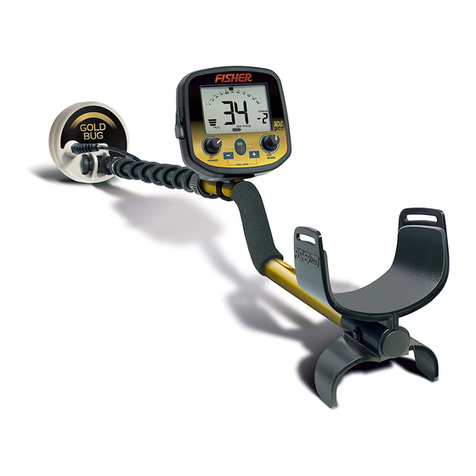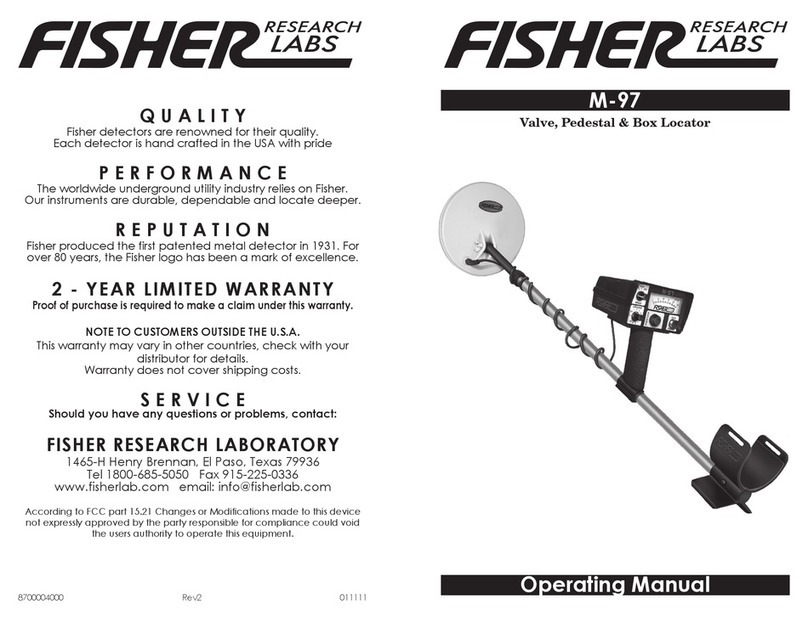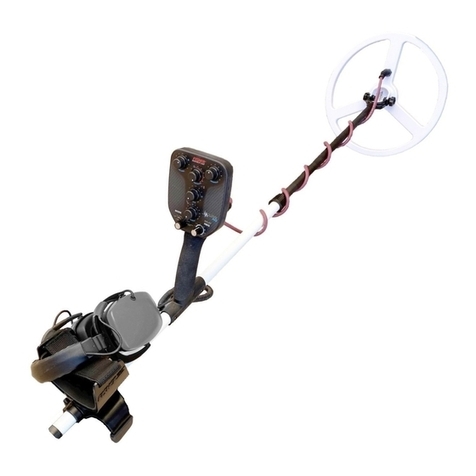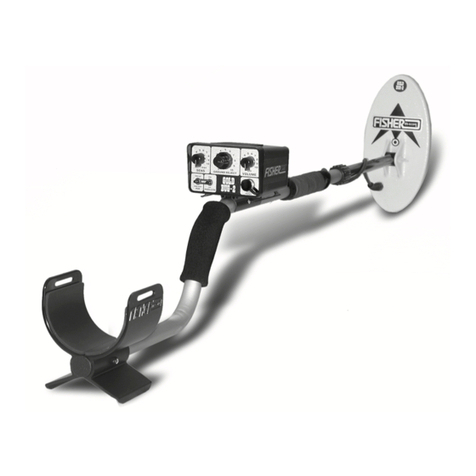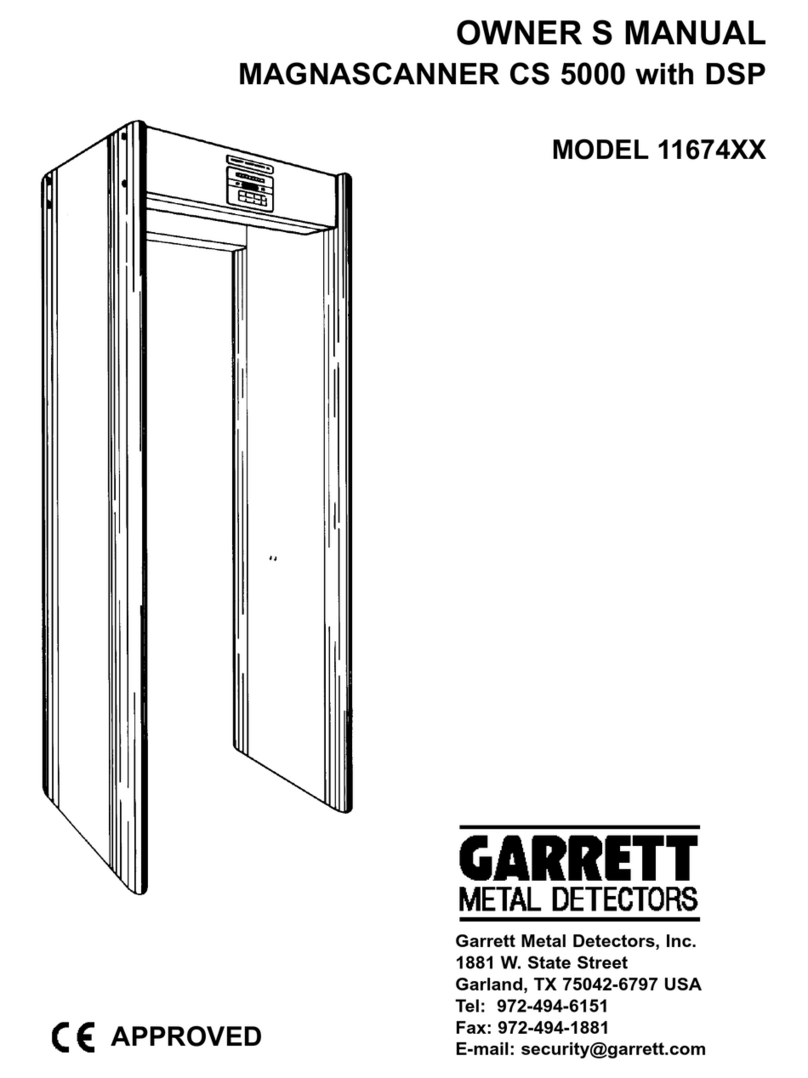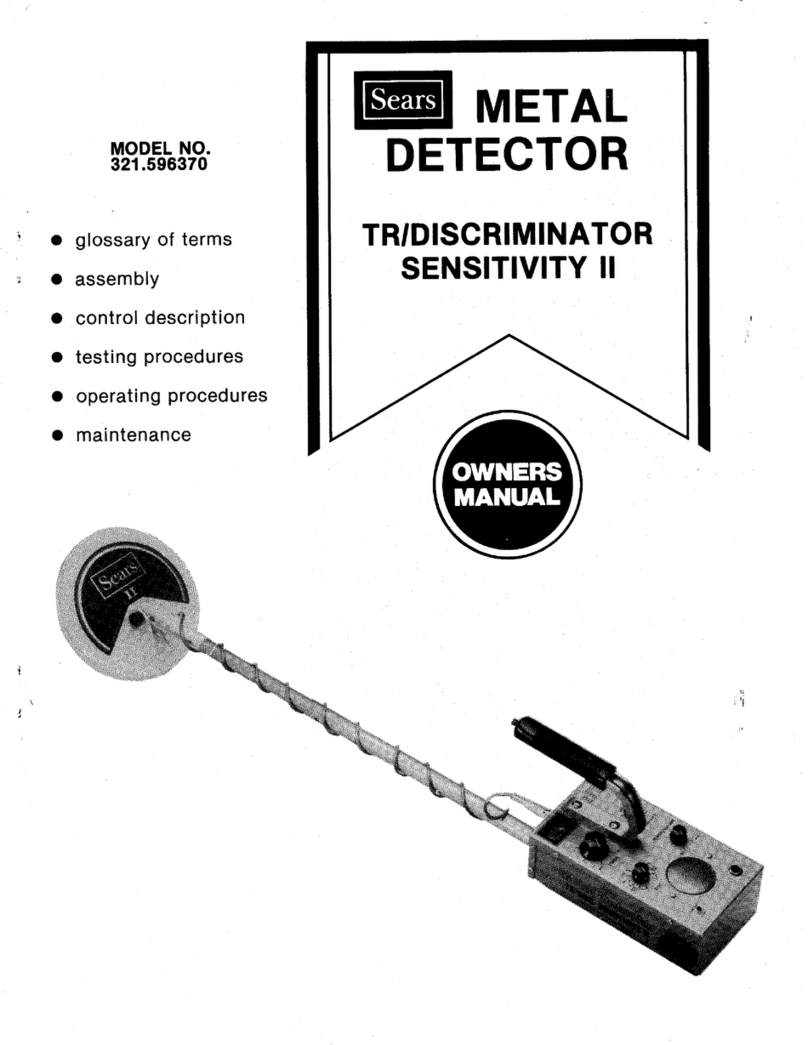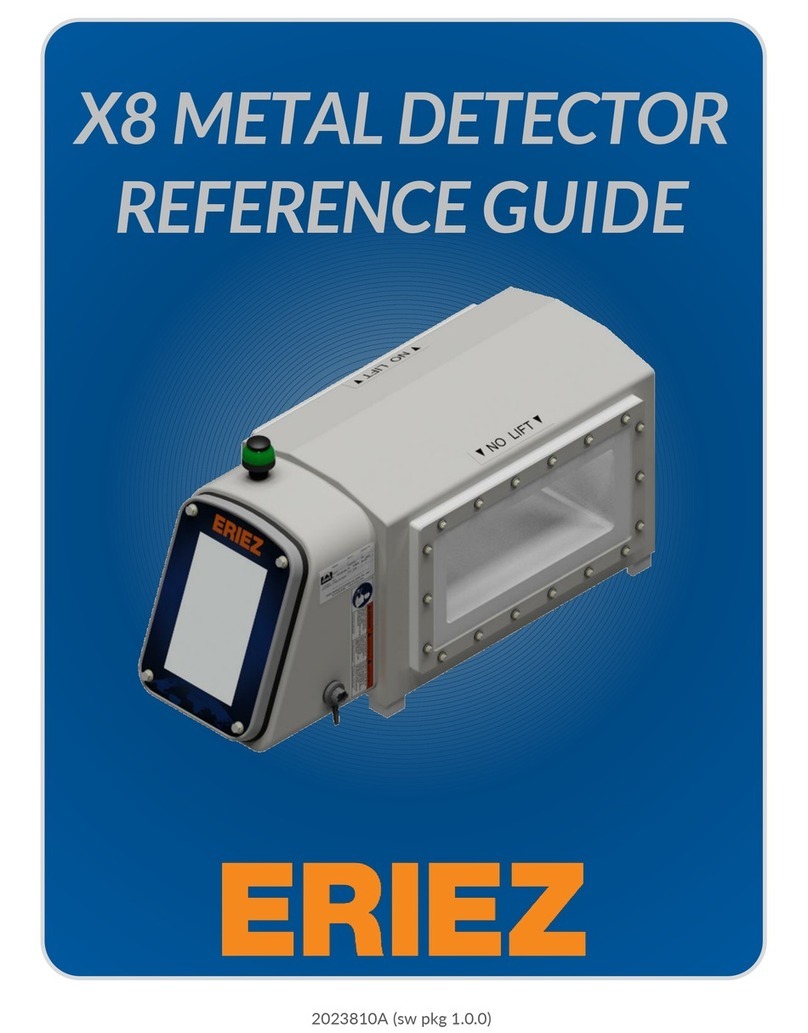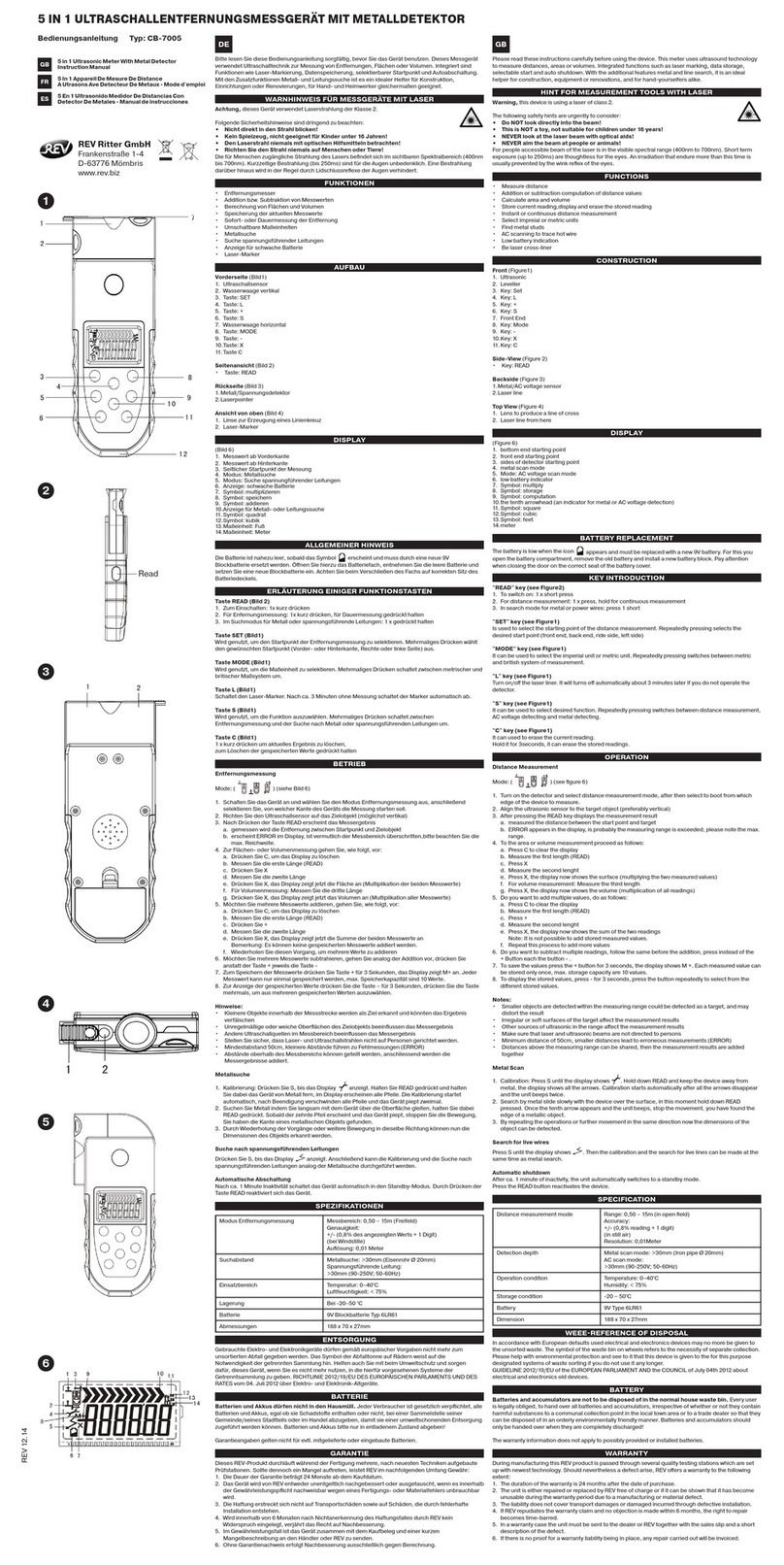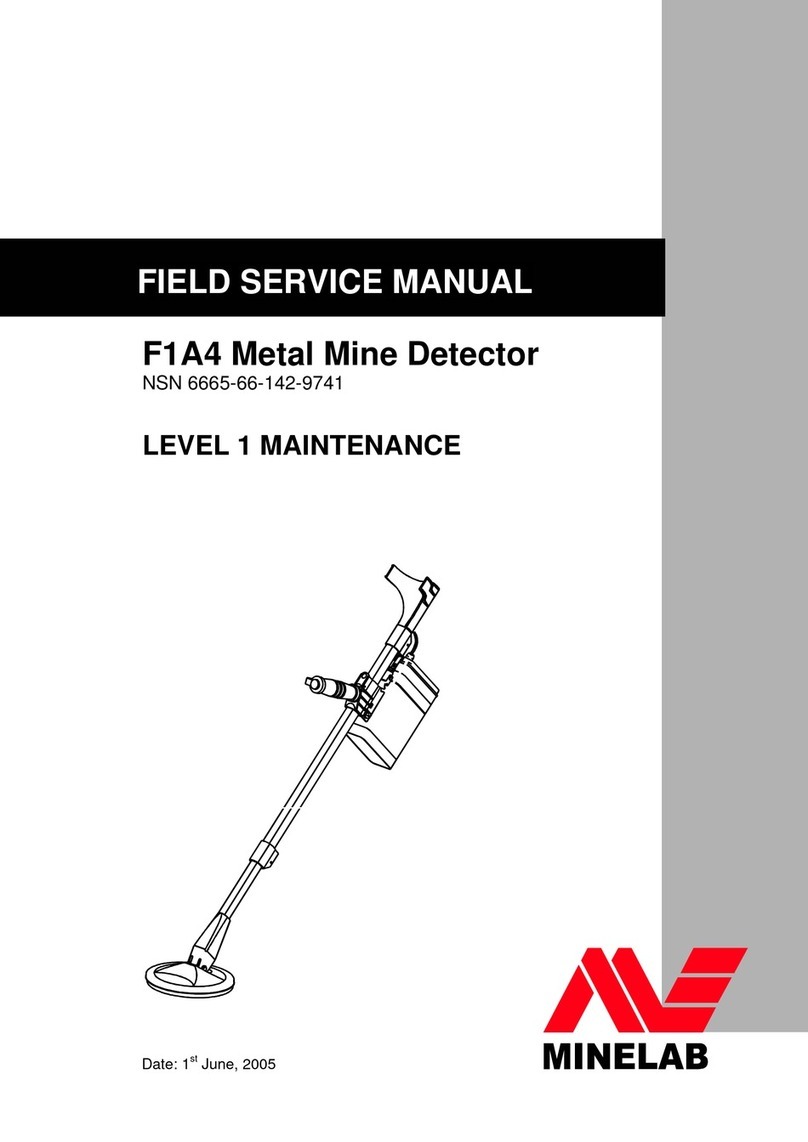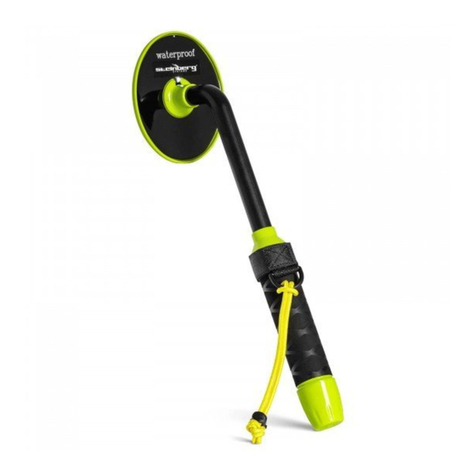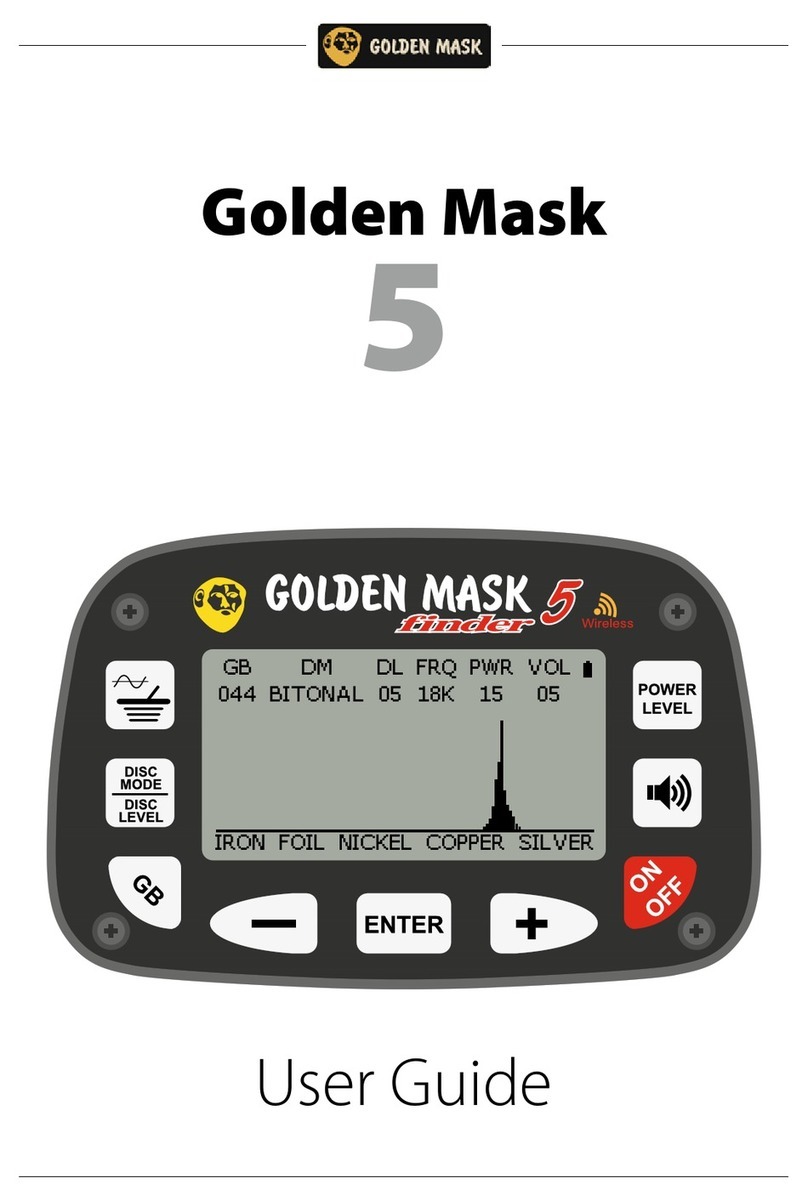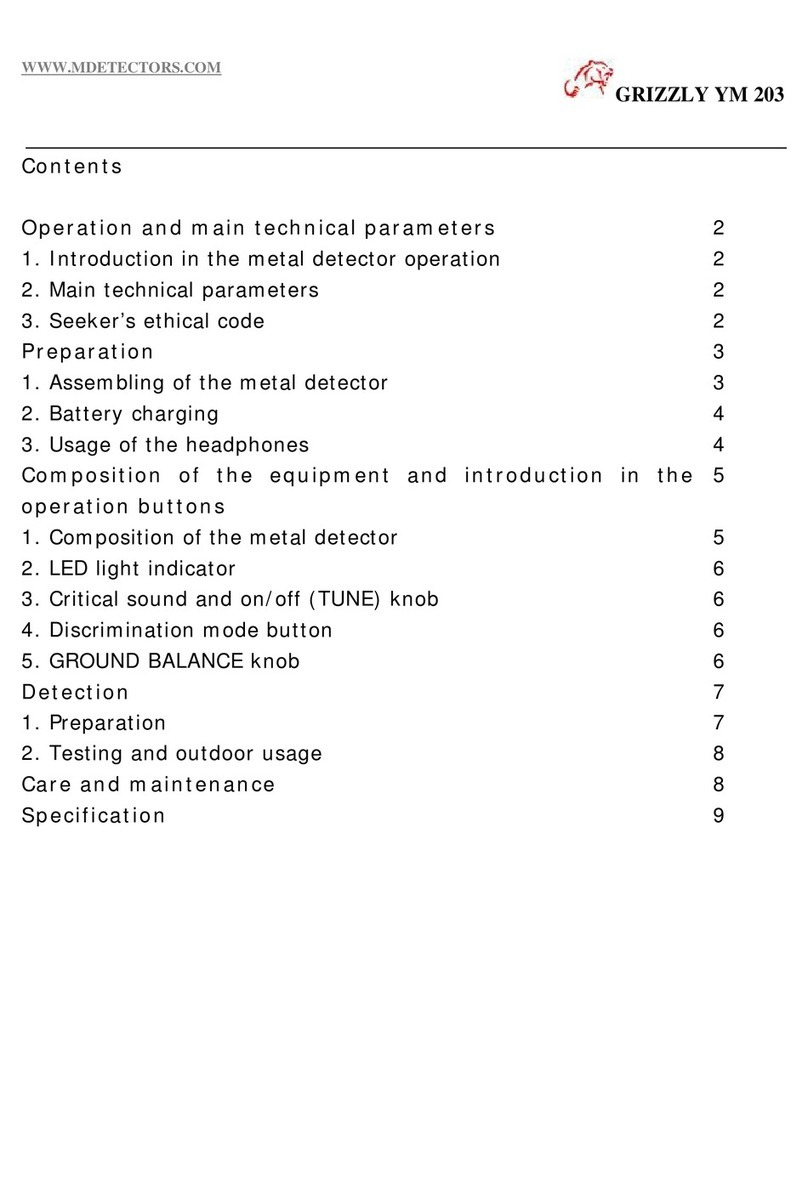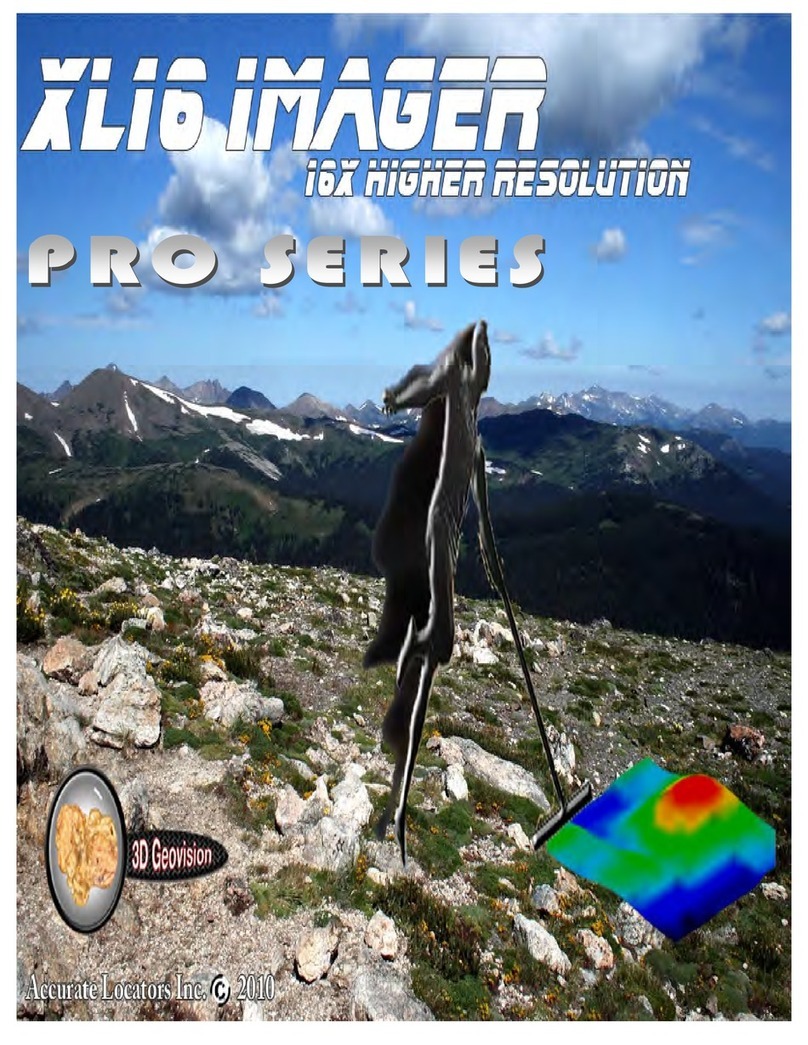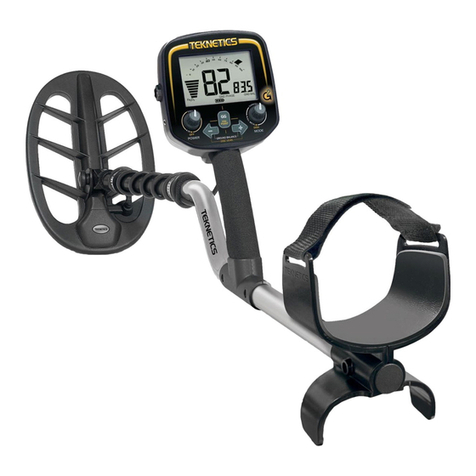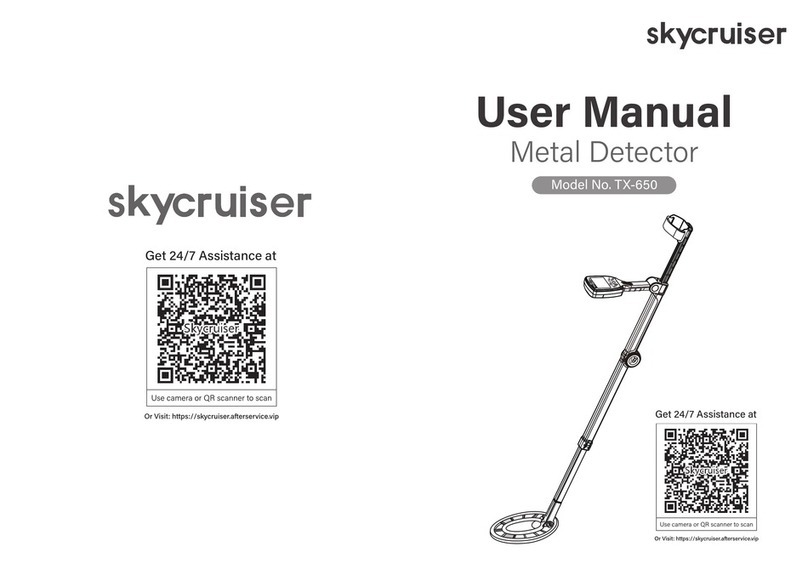10 35
F75
Comprehensive Operating Manual & Guide to Metal Detecting Comprehensive Operating Manual & Guide to Metal Detecting
F75
Introduction to the Fisher F75
HIGH PERFORMANCE The F75 is a multi-purpose high-performance computerized metal
detector. It has the high sensitivity and ground balancing control needed for professional
gold prospecting, the discrimination responsiveness needed for serious relic hunting
under difficult conditions, and visual target ID considered essential in searching for coins.
The F75 operates at 13 kHz for good sensitivity to gold nuggets and jewelry as well as to
coins. The F75 comes with an 11-inch elliptical Bi-Axial searchcoil for maximum
detection depth in mineralized soils.
USER COMFORT The F75 is among the lightest and best balanced of all high-performance
metal detectors, so you can hold and swing it almost effortlessly. The armrest position is
adjustable to fit your arm. The grip is durable high-friction foam elastomer, comfortable in
any kind of weather. The controls are conveniently located and easy to learn how to use.
Locking collars on the tubes eliminate rattling.
EASY-TO-USE & INFORMATIVE INTERFACE The entire menu is always visible on the
LCD display. The LCD display indicates the electrical signature (Target I.D.) of the
detected metal object. The display provides continuous information on battery condition
and on ground mineralization, which affects detection depth. Help messages are
automatically displayed on the bottom of the display when necessary.
LOW OPERATING COST The F75 is powered by four AA alkaline batteries, which will
typically last for more than 40 hours of use before needing replacement.
DESIGNED BY MANY OF THE INDUSTRY’S MOST TALENTED ENGINEERS
The lead engineers on the F75 design team were John Gardiner and David Johnson.
David Johnson’s previous Fisher design credits include the CZ-platform, the Gold Bug-
series, most of the 1200-series, Impulse Underwater Detector, CZ-20 Underwater
Detector, FX3 magnetometer, the Gemini 2-box locator, the XLT-16 Acoustical Leak
Detector, and the XLG-80 Ultrasonic Leak Detector. John and David were supported by
fellow electrical engineers Jorge Corral, and Mark Krieger. The mechanical design was a
collaboration among David Johnson, Brad Fulghum, John Griffin, and Tom Walsh.
MECHANICAL ENGINEERING
While the F75 is robustly engineered for outdoor use, it is not indestructible and it is not
waterproof.
RESET function
The F75’s microprocessor saves all settings which you input, even after the power is
turned off.
If you wish to reset the settings to the factory preset, follow this process:
1. Turn detector off.
2. Press-and-hold the red MENU button and
push-forward-and-hold the TOGGLE SWITCH.
3. Turn the detector on, while you are still holding the controls.
4. Release the MENU button and TOGGLE SWITCH.
5. See the F symbol. When the F disappears, the detector is reset.
Search Techniques (continued)
If, while searching, you are constantly getting signals from which you cannot recover metal
targets, you may be detecting small or deep targets which are not recoverable using the
methods at hand. So, you may do better if you reduce the Sensitivity setting.
Tips on ground balancing
When the F75 first turns on, the ground balance setting is preset to 90. This will give a
positive response on nearly all soils. If you search in the Discrimination mode, you will
probably not have to balance to the ground. If you switch to All Metal mode, ground balancing
will probably be necessary.
You must find a spot of ground which is free of metal to accurately balance to the ground.
Before you attempt to Ground Balance, sweep back and forth to see if any metal target is
present. Locate what seems to be a clear area and then Ground Balance. Ground Balancing
may be done automatically by pushing the trigger, or manually if you are in All Metal mode.
After you have ground balanced, sweep back and forth to see if there is little or no audible
response to the soil. This is best done either in All Metal mode, or in Discrimination mode with
discrimination set to zero. Alternatively, use the PinPoint trigger to check the spot. If there is
little or no response, ground balancing was successful. If there is still substantial response,
there may have been metal present where you attempted to ground balance, so find another
promising spot and try again. If you cannot find a spot to successfully ground balance, it is time
to give up. Reset the ground setting to 90 and then use the machine without ground balancing.
In most areas, once you have ground balanced, the ground balance setting will remain
satisfactory for a long time. However, if the soil has been disturbed by digging or the addition
of fill dirt, or if you are in a geologically complex setting such as is commonly encountered in
gold prospecting areas, you may have to frequently perform the ground balancing procedure
to accommodate changing soil conditions.
When you ground balance, the numerical Ground Setting will momentarily appear on the LCD
screen. In general, sandy or gravelly soils will tend to read in the 75-95 range, light colored
loams and clays will tend to read in the 50-80 range, and red clays will tend to read in the 35-
55 range. To express it in other terms, the more highly weathered, oxidized, or finely grained
the soil is, the lower the numeric reading will be.
The Fe3O4bar graph indicates how much iron mineralization is present. For it to work, the
searchcoil must remain in motion. The most accurate readings will be achieved by pumping
the coil as you do when ground balancing. The higher the mineralization, the greater the
necessity to ground balance the detector for the best depth performance.
If you are searching for relics, you can make a map of the soil of the site. Make a grid of the
site. Then collect data. Ground Balance to document mineral type; view mineral amount on
the Fe3O4bar graph. Then plot the data on the site map and draw isolines. In this way you
may be able to locate areas which have been dug, backfilled, or subjected to fire. This
information in turn helps to reveal the history of the site.
F75-MANUAL(122811).qx 12/14/12 9:04 AM Page 10
